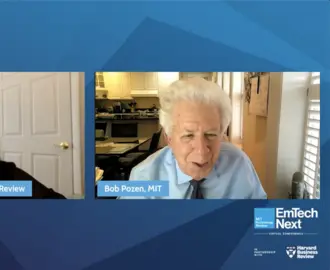The concept of the learning curve has been around for almost a century. It is well established that average productivity increases as a function of cumulative experience. But what is not known is whether that experience affects the consistency of performance.
Jónas Oddur Jónasson, Assistant Professor of Operations Management, MIT Sloan School of Management
For example, when you start a new job, it will take you longer to complete a new task. After doing that task 100 times, your average completion time improves. However, there will still be some variability in your completion time. What is the range of that variability?
The range in variability matters for many reasons, but the easiest one to relate to is probably planning. Imagine that you need to drive to a new location for a job interview, so you plug in the address on your GPS. The GPS tells you it will take one hour to drive there. Is this reliable information? Or, is there a chance that the trip will actually take three hours? The variability in the time estimate is important information.
That time variability is even more critical information for surgeries. We know surgeons can perform routine procedures faster on average over time because of learning curves. The faster they complete the procedure, the better for the patient. But if the average time is 2.5 hours, does this mean that almost every procedure takes that long? Or, are some procedures 30 minutes while others are five hours?
If you are the patient, you would want to know the answer. And if you are in charge of booking operating rooms, you would also want to know the answer because the wrong estimate could lead to delays for multiple other patients. Knowing the average spread around the expected time duration lets you make better decisions about how many surgeries can and should be planned in a day.
Up until now, research has been focused on the average time benefits of learning curves. The literature has not addressed the variance learning curve.
To find insights on performance variability, my colleague Hessam Bavafa and I looked at a decade of data from the London Ambulance Service. We analyzed how experience affected the mean and variance of paramedic performance as they picked up patients and brought them to hospitals. Our goal was to see whether performance improvements for paramedics became more consistent due to learning curves.
Our study revealed two main insights. The first confirmed what we already knew from prior literature: Learning curves improve average productivity. We found that paramedics with lower experience improved by 1.7%-2.8% after experiencing 500 patient calls. After that, there were diminishing returns to increased experience.
The second insight was more interesting. We found a significant impact of experience on performance consistency. The study showed that the variance of paramedic performance was initially reduced by 3.7%-8.7% with 500 additional jobs. Similar to the first insight, there were subsequent diminishing returns on variance with increased experience.
We also found that if you do not consider the impact of experience on performance variability, you will underestimate the benefits of the learning curve in service systems by as much as 4%. If you ignore this effect, you may be off in your planning.
This study is a significant contribution to operations management research, which strives to identify factors that impact productivity. These are fundamental insights about the operational learning curve, as variability is a driver of system performance in most service and manufacturing systems.
Jónas Oddur Jónasson is the Class of 1943 Career Development Professor and an Assistant Professor of Operations Management at the MIT Sloan School of Management. He also is coauthor of “The variance learning curve,” which has been accepted for publication in Management Science.



